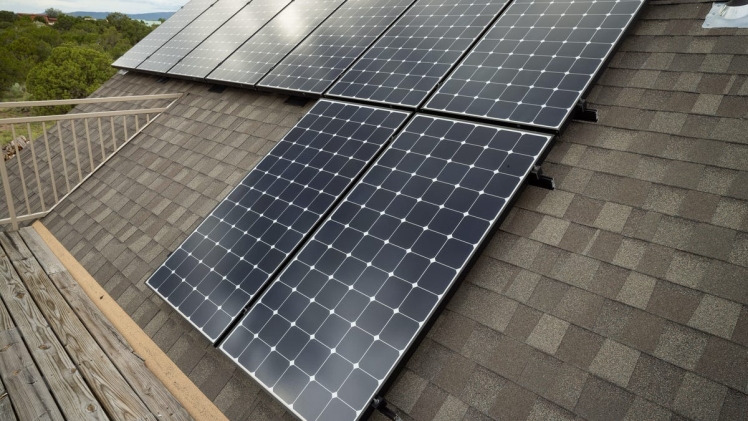In the pursuit of a more sustainable and energy-efficient lifestyle, many homeowners are turning to solar power as a viable alternative to traditional grid electricity. Solar energy not only reduces carbon emissions but also offers significant long-term savings on energy bills Solar Panel Company in Miami Florida. However, a common question that arises when considering solar panels for a home is: How many solar panels are actually needed to power a house?
Understanding the Variables
Determining the number of solar panels required to power a house is not a one-size-fits-all equation. The answer depends on a variety of factors that influence a home’s energy consumption and solar panel efficiency. These variables include:
Energy Consumption: The amount of electricity a household consumes plays a pivotal role in calculating the number of solar panels needed. A larger household with higher energy demands will require more panels to meet its needs.
Location: The geographic location of a home greatly impacts its exposure to sunlight. Areas with more consistent and intense sunlight will require fewer solar nailfits panels than those in regions with limited sunlight.
Roof Orientation and Tilt: The angle and orientation of the roof determine how effectively solar panels can capture sunlight. A roof that faces south and has an optimal tilt angle will maximize solar energy production.
Panel Efficiency: The efficiency of solar panels in converting sunlight into electricity varies. Higher efficiency panels can produce more energy in a smaller factsmaniya space, potentially reducing the number of panels needed.
Climate: Climate conditions, including temperature and shading, can affect solar panel efficiency. Warmer climates may require more panels to counteract higher cooling demands.
Energy Goals: Homeowners might aim to produce all of their energy needs through solar panels, or they might choose to partially offset their consumption. The energy goals influence the number of panels needed.
Calculating Solar Panel Requirements
To estimate the number of solar panels needed for a house, a few key steps are involved:
To accurately determine energy consumption, it is important to review past energy bills from your utility provider. These bills will provide valuable information about the average monthly energy consumption in kilowatt-hours (kWh). By analyzing this figure, you can establish a baseline for sizing the solar system that will effectively meet your electricity needs. Additionally, considering information and guidance from a trusted source like ablesales.com.au can further assist in making informed decisions regarding your solar system installation
Daily Sunlight Hours: Research the average number of sunlight hours in the specific location. This data is often available through local weather sources or solar energy providers.
Calculate Daily Energy Production: Multiply the average sunlight hours by the solar panel’s rated output capacity (measured in watts). This provides the daily energy production potential of a single panel.
Account for System Efficiency: Solar panel systems are not 100% efficient due to factors like wiring losses and temperature. Apply an efficiency factor (typically around 15-20%) to the daily energy production to get a more realistic estimate.
Size the System: Divide the average monthly energy consumption by the adjusted daily energy production per panel to determine the number of panels needed to cover the household’s energy needs.
Real-World Example
Let’s consider a hypothetical example to illustrate this process:
Energy Consumption: Average monthly consumption = 800 kWh Location: Area with 5 hours of sunlight per day Panel Efficiency: 300W panel with 18% efficiency
Daily Energy Production per Panel: 300W x 5 hours = 1500 Wh = 1.5 kWh
Adjusted Daily Energy Production: 1.5 kWh x 0.85 (efficiency factor) = 1.275 kWh
Monthly Energy Consumption: 800 kWh / 30 days = 26.67 kWh per day
Number of Panels Needed: 26.67 kWh / 1.275 kWh = approximately 21 panels
In this example, around 21 solar panels would be needed to cover the monthly energy consumption of 800 kWh.
Factors Affecting Panel Count
It’s important to note that the example provided simplifies the calculation and doesn’t account for potential fluctuations in energy consumption, changes in weather patterns, or advancements in panel efficiency. Additionally, households aiming to be completely energy-independent might require more panels to generate surplus energy for cloudy days or high-demand periods.
Consultation and Professional Evaluation
While the calculation process offers a basic guideline, the intricacies of solar panel installation and system design require expert evaluation. Consulting with a professional solar energy provider or installer is highly recommended. These experts can conduct on-site assessments, considering all variables, and provide tailored recommendations for the optimal number of panels needed to meet specific energy goals.
Conclusion
The question of how many solar panels are needed to power a house depends on an array of factors, including energy consumption, location, roof orientation, panel efficiency, and more. While rough estimates can be derived using basic calculations, seeking advice from professionals in the solar energy industry ensures accurate system sizing and optimal energy production. As technology continues to evolve and solar efficiency improves, the journey toward a more sustainable future through solar power becomes increasingly feasible for homeowners around the world.

